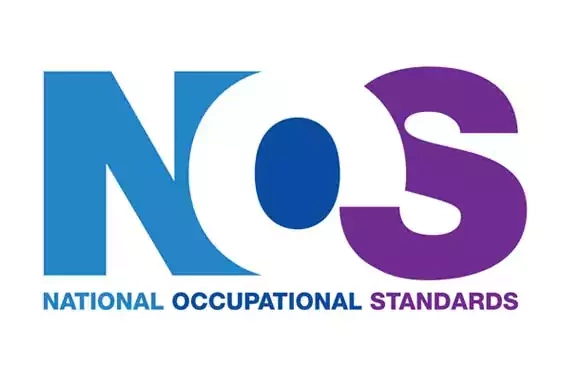NOS is developed in consultation with experts from the sector, across the four nations, and following an SDS approved process.
-
Industry Research
National Occupational Standards begin with research into an industry to identify the size and profile of the sector and the types of occupations.
-
Stakeholder Engagement
Key stakeholders from all four UK nations are engaged to ensure a broad consensus is reached. These will include employers of all sizes, Trade Associations, training providers, Awarding Organisations, unions, sector specialists etc. These stakeholders will help identify key trends and developments to inform a NOS review or indicate a NOS gap.
-
Functional Analysis
The next stage identifies particular areas of work in the specific occupations to identify the jobs and functions/activities completed within those roles:
- Identify the key purpose of the role which should relate to all types of people who work in that occupation. The key purpose is the aim of the occupational area and must point to an outcome e.g. a Light Vehicle Service Maintenance Technician must carry out service and maintenance activities on a light vehicle.
- Identify the broad functions undertaken to achieve the key purpose, e.g. conduct routine examination, adjustment and replacement activities as part of periodic maintenance and test systems for operation and functionality.
- Identify the individual activities that make up this function, e.g. carry out routine light vehicle maintenance, remove and replace light vehicle components, inspect light vehicles using prescribed methods.
This information is used to create Occupational Functional Maps. These maps are used to identify where suitable NOS already exist or highlight the need for NOS development. Development is always carried out in conjunction with the relevant sector.
-
Writing NOS
- Each NOS must be concise and clear and be appropriate to the individuals who carry out the function.
- The NOS title must be unique and appropriately describe the function it covers.
- The NOS overview must indicate what the NOS is about and who it is for and provide a short summary of the content of the NOS.
- The NOS performance criteria and knowledge and understanding must detail what an individual needs to do and know in order to carry out this function consistently to the required standard.
- Where appropriate, NOS may also contain scope that indicates the different variables an individual might have to deal with, e.g. equipment used includes hand tools, specialist workshop tools, electrical testing equipment.
- A glossary may also be used to detail key words and phrases with explanations of their specific meaning within the NOS.
-
Wider Consultation
Once written it is important that the draft NOS is made available to the whole sector to ensure feedback opportunities are given to all stakeholders. This is facilitated via IMI newsletters, web updates and social media posts. Stakeholders participating in the development/review are also encouraged to communicate the consultation to their contacts. Feedback is collated, usually via an electronic survey, and used to amend the NOS. If necessary, these revised draft NOS are then broadcast again to the wider sector, until no further feedback is received.
-
Publication of NOS
Once finalised the NOS is published on the NOS database where it is freely available for use by all.


